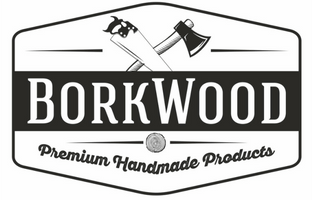How to Save on Architectural 3D Studio Services: Outsourcing and Other Cost-Effective Strategies
The demand for architectural rendering services has surged in recent years, driven by the need for high-quality visualizations in architecture, real estate, and construction industries. However, as the complexity of projects increases, so do the costs associated with hiring a full-scale architectural rendering studio. Managing these expenses can become a significant challenge for businesses seeking to balance quality and budget. Fortunately, several cost-effective strategies are available, including outsourcing and using more affordable software, that can help reduce costs without compromising the quality of the work.
The Benefits of Outsourcing Architectural 3D Services
Outsourcing 3D rendering services is one of the most popular and effective ways to reduce costs while maintaining high-quality results. By outsourcing to regions where labor costs are lower, businesses can get the same level of expertise for a fraction of the price they would pay in-house or in more expensive markets. Countries in Eastern Europe, South Asia, and Latin America have become go-to destinations for architectural rendering studios offering top-notch work at more competitive rates.
Moreover, outsourcing allows for greater flexibility and scalability. Companies can quickly ramp up or down based on project demands without the need to maintain a large, permanent in-house team. By partnering with external 3D architectural rendering services, businesses can tap into a wider talent pool and expertise.
Choosing the Right Outsourcing Partner
When outsourcing, selecting the right partner is crucial to ensure you receive high-quality work and cost savings. Start by reviewing portfolios to assess the partner’s expertise in architectural rendering. Look for evidence of successful past projects similar to what you need. Client testimonials and reviews provide insight into the firm’s reliability, communication skills, and ability to meet deadlines.
Ensure the architectural rendering studio uses industry-standard software like 3Ds Max or V-Ray to ensure compatibility with your existing processes. Clear communication is also essential. Setting expectations early, including timelines, deliverables, and pricing, can help avoid misunderstandings that may lead to additional costs down the line.
Utilizing Freelancers for Specialized Tasks
Hiring freelancers can be a highly cost-effective solution for smaller projects or specific tasks within larger 3D architectural rendering projects. Freelancers allow you to pay only for the needed work, reducing overhead costs. Platforms like Upwork, Freelancer, and Fiverr are filled with talented professionals specializing in modeling, texturing, or lighting.
One of the most significant advantages of working with freelancers is flexibility. You can bring in experts on a short-term basis to handle specific parts of a project, significantly reducing the overall cost compared to hiring a full-time employee or a large firm. Review portfolios and past work to ensure the freelancer’s skills align with your project’s needs.
Read also: Pathlight Property Management
Negotiating Contracts and Pricing Models
Whether working with a full architectural rendering studio or freelancers, negotiating favorable contracts can save you a lot of money in the long run. Discuss different pricing models, such as fixed-price contracts, hourly rates, or volume discounts. Fixed-price contracts benefit budgeting, as they provide a clear upfront cost and reduce the scope creep risk.
For businesses that anticipate needing ongoing 3D rendering services, establishing long-term partnerships can also lead to more favorable pricing. Many rendering services providers are willing to offer discounts in exchange for guaranteed, repeat business. Clear communication about the scope of work, timelines, and expectations from the outset will help you avoid hidden costs.
Using Affordable Software and Tools
Another effective way to save on 3D architectural rendering costs is to use more affordable or open-source software. High-end tools like 3Ds Max and V-Ray are industry standards but come with hefty price tags. Fortunately, there are alternatives like Blender, which is free and offers many of the same powerful features for modeling, texturing, and rendering.
SketchUp is another cost-effective option that is widely used for architectural visualizations. It provides an intuitive platform for creating 3D models without significant financial investment. By opting for these affordable tools, businesses can still achieve professional-quality results without breaking the bank.
Case Studies: Companies Saving Costs with Outsourcing

Several companies have successfully reduced their expenses by outsourcing architectural rendering services. Here are a few examples:
-
Real Estate Development in London: A real estate firm outsourced its 3D architectural rendering needs to a studio in Eastern Europe. By doing so, it reduced its costs by 40% compared to local providers without sacrificing quality.
-
Urban Planning Project in the US: A city planning team used freelancers from Upwork to handle the 3D modeling of public spaces. This allowed them to save 30% of their budget while benefiting from various specialized skills.
-
Commercial Construction in Australia: A construction firm partnered with an offshore architectural rendering studio for long-term projects, negotiating a volume discount that led to a 25% savings over the year.
These case studies show how outsourcing and flexible strategies can yield substantial savings while maintaining high work standards.
Conclusion
In conclusion, reducing costs for architectural rendering services is achievable through outsourcing, utilizing freelancers, negotiating contracts, and choosing more affordable software. Whether handling a small project or managing a large-scale construction, these strategies can help you optimize your expenses while maintaining the quality you need. By assessing your specific needs and being flexible with your approach, businesses can leverage these cost-effective solutions to get the most out of their 3D rendering services without overspending.


